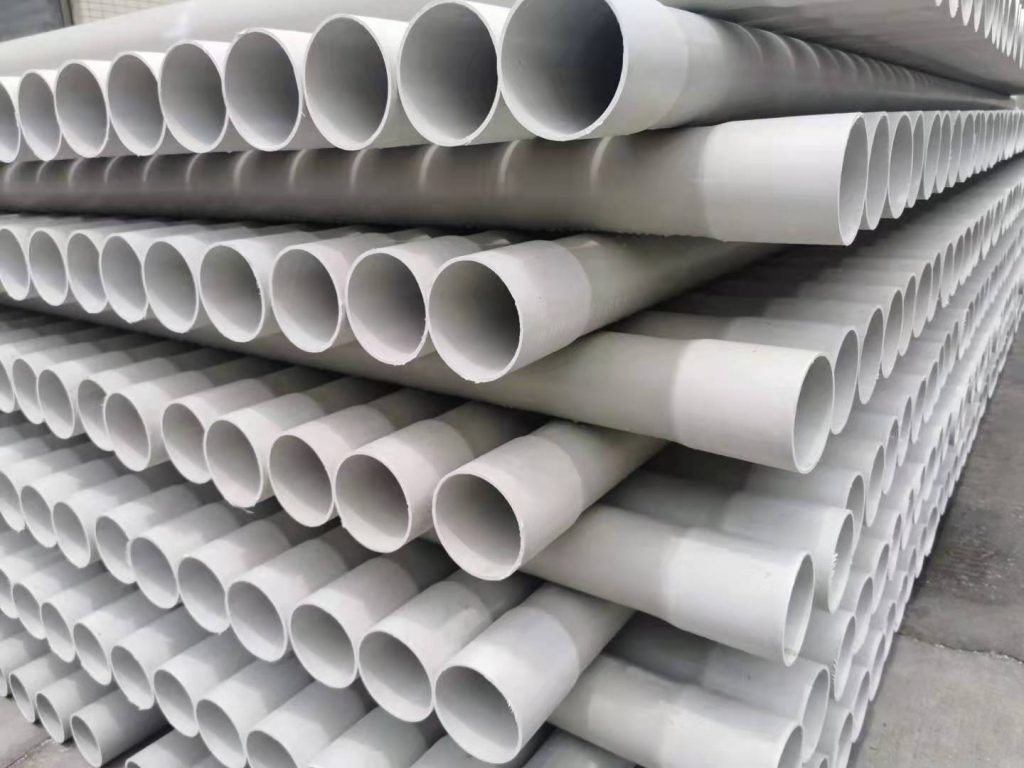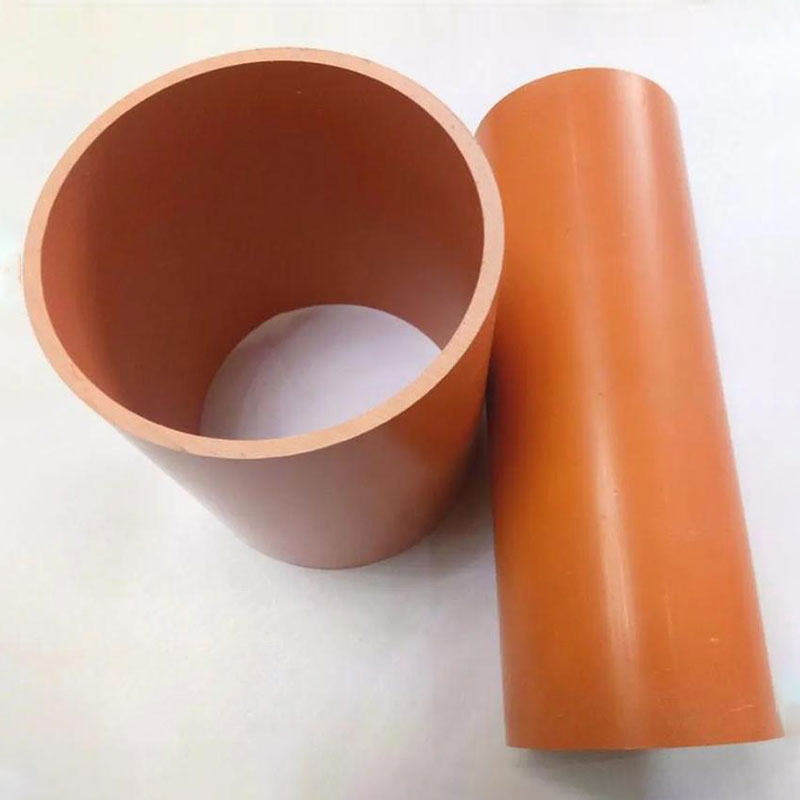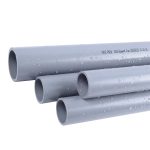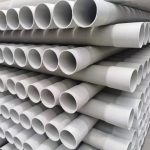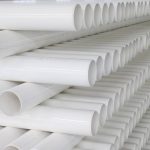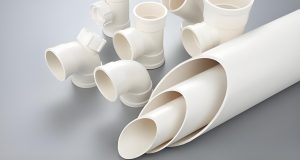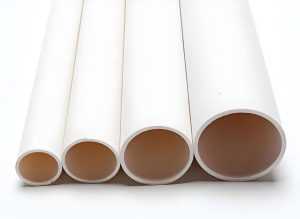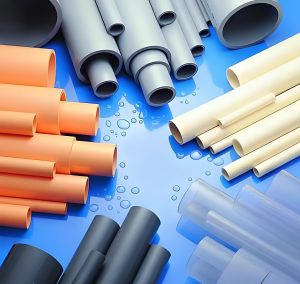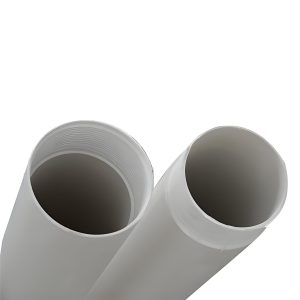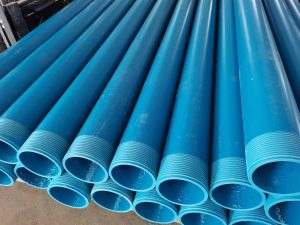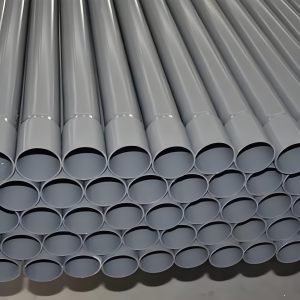LUOYANG DATANG ENERGY TECH CO.,LTD

CPVC PIPES FOR PLUMBING SOLUTION
PRODUCT PARAMETERS
Description
Chlorinated Polyvinyl Chloride(CPVC) Pipe
Introduction of CPVC Pipe
CPVC is produced by adding chlorine to PVC in a water slurry or fluidized bed chlorination process. The chlorination reaction is initiated by ultraviolet light. The chlorinated PVC is compounded with ingredients necessary for the desired properties for further processing. The chlorine added to PVC gives CPVC higher temperature performance and improved fire and corrosion resistance.
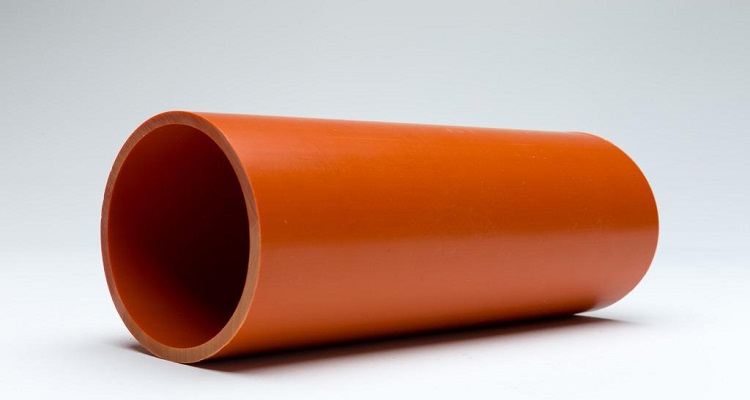
Details of CPVC Pipe
The CPVC plumbing pipes are available in sizes from 15mm (1/2″) to 50mm (2″) conforming to IS 15778 in SDR 11 & 13.5 classes. The pipes are with standard hydrostatic pressure ratings of 400 psi at 73ºF (2,750 kPa at 23ºC) and 100 psi at 180ºF (690 kPa at 82ºC).
Advantage of CPVC pipe:
- Safety of potable water and long-term reliability
- Resistance to corrosion, tuberculation, deposits
- Chlorine and chloramine resistance
- Lightweight, easy to transport
- Available in wide range of sizes
- Noise and water hammer resistance
- No scrap value, avoiding jobsite theft
- Durability and toughness to survive jobsite installations
- No flame used for joining, solvent cement joints
- Universal compatibility of pipes/fittings
- Professional installed appearance
Specifations of CPVC Pipe
Pipe Dimensions
Note :
1. Dimensions with “+” are not a function of SDR.
2. Fittings are suitable for corresponding pipe pressure rating.Mark except 400mm .
| Nominal Bore | Outside Diameter | SDR 11 | SDR 13.5 | ||||||||
| Wall thickness | Working Pressure | Wall thickness | Working Pressure | ||||||||
| Min | Max | Min | Max | At 27℃ | At 82℃ | Min | Max | At 27℃ | At 82℃ | ||
| (mm) | (inch) | (mm) | (mm) | (mm) | (mm) | Kg/cm² | Kg/cm² | (mm) | (mm) | Kg/cm² | Kg/cm² |
| 15 | 1/2 | 15.80 | 16 | 1.70 | 2.20 | 28.14 | 6.93 | 1.40 | 1.90 | 22.22 | 5.60 |
| 20 | 3/4 | 22.10 | 23.30 | 2.00 | 2.50 | 28.14 | 6.93 | 1.70 | 2.20 | 22.22 | 5.60 |
| 25 | 1 | 28.50 | 28.70 | 2.60 | 3.10 | 28.14 | 6.93 | 2.10 | 2.60 | 22.22 | 5.60 |
| 32 | 11/4 | 34.80 | 35.00 | 3.20 | 3.70 | 28.14 | 6.93 | 2.60 | 3.10 | 22.22 | 5.60 |
| 40 | 11/2 | 41.20 | 41.40 | 3.80 | 4.30 | 28.14 | 6.93 | 3.10 | 3.60 | 22.22 | 5.60 |
| 50 | 2 | 53.90 | 54.10 | 4.90 | 5.50 | 28.14 | 6.93 | 4.00 | 4.60 | 22.22 | 5.60 |
| Nominal Bore | Outside Dia. | Schedule 40 | Schedule 80 | |||||||
| Wall thickness | Working Pressure | Wall thickness | Working Pressure | |||||||
| Min | Max | At 27℃ | At 82℃ | Min | Max | At 27℃ | At 82℃ | |||
| (mm) | (inch) | (mm) | (mm) | (mm) | Kg/cm² | Kg/cm² | (mm) | (mm) | Kg/cm² | Kg/cm² |
| 65 | 21/2 | 73.00(+/-0.18) | 5.16 | 5.77 | 21.10 | 5.30 | 7.01 | 7.85 | 29.57 | 7.43 |
| 80 | 3 | 88.90(+/-0.20) | 5.49 | 6.15 | 18.25 | 4.58 | 7.62 | 8.53 | 26.00 | 6.32 |
| 100 | 4 | 114.30(+/-0.23) | 6.02 | 6.73 | 15.49 | 3.87 | 8.56 | 9.58 | 22.53 | 5.60 |
| 150 | 6 | 168.30(+/-0.28) | 7.11 | 7.79 | 12.64 | 3.16 | 10.97 | 12.29 | 19.68 | 4.89 |
| 200 | 8 | 219.10(+/-0.38) | 8.18 | 9.17 | 11.21 | 2.85 | 12.70 | 14.22 | 17.54 | 4.18 |
| 250 | 10 | 273.10(+/-0.28) | 9.27 | 10.39 | 9.89 | 2.44 | 15.06 | 16.86 | 16.21 | 3.81 |
Applications of CPVC Pipe
Hot and cold water plumbing distribution, residential and commercial
CPVC is wildly used in hot and cold water distribution systems in residential buildings.The pipes can handle temperatures up to 200°F (93°C),making the pipes suitable for hot water convey systems.
Industrial piping system
CPVC tubes are well-suited for industrial piping systems owing to their superior resistance to high temperatures and corrosion. They are ideal for conveying thermal chemicals, process water, and other fluids that may possess acidic, alkaline, or reactive characteristics. Consequently, CPVC tubes are particularly appropriate for applications in chemical processing plants and oil refinery pipeline transportation.
Fire Fighting Systems
Chlorinated polyvinyl chloride (CPVC) is extensively utilized in both residential and industrial fire protection systems due to its suitability for high-pressure environments. It constitutes a critical component of the network responsible for the delivery of water or flame-retardant agents to extinguish fires.
Reclaimed water piping (purple pipe)
CPVC pipes are widely utilized in drainage and waste management systems as well as in industrial applications. Their excellent chemical resistance renders them particularly suitable for conveying chemicals, process water,and other fluids that may be acidic, alkaline, or otherwise reactive.
Packing and Shipment
Depends on the products and qty,we could make the packing of coiling,rolls,bundle packing,crates or boxes,etc.
Shipment:By sea,railway,by air or as customer’s request.
Company Profile
Luoyang Datang Energy Tech Co.Ltd was established in 2015 and located in High-tech development zone, Luoyang City, covers a large area with state-of-the-art facilities. Our government offers a supportive environment, including convenient transportation and access to essential resources. Since inception in 2015, we have been committed to excellence in pipes and fittings, continuously innovating to meet market demands.
If you need PPR Pipes and Fittings,Please feel free to contact us(sales@pipesandfittings.net)
Payment Terms
T/T,L/C at sight,Western Union & Paypal,etc.
FAQ of CPVC Pipe
Q1,What is CPVC Pipe?
CPVC (chlorinated polyvinyl chloride) is a robust and durable material that has been widely utilized in plumbing applications globally for over five decades. CPVC exhibits excellent chemical resistance, reliability, and the capacity to withstand high temperatures and pressures. These properties make it an ideal choice for residential, commercial, and industrial piping systems.
Q2,Why CPVC is Ideal for Residential Plumbing Systems?
Safety: CPVC is recognized as a green and eco-friendly material. The use of CPVC tubes in drinking water systems ensures that no harmful or dangerous substances are transferred into the delivered drinking water.
Compressive Resistance: CPVC pipes and fittings are joined by solvent cement. Solvent-based cement is a substance that chemically fuses pipes to fittings at the molecular level, forming the strongest part of the piping system.
Chlorine Resistance: CPVC pipes are not affected by chlorine. Chlorine-containing disinfectants, especially chlorine dioxide, can cause failures in PPR (green pipes), PEX and metal pipes, but not in CPVC pipes.
Antibacterial: Bacterial growth may occur in the water distribution system, yet CPVC helps keep the water pure. Multiple international studies have confirmed that CPVC has consistently outperformed copper and all other plastic piping materials in its ability to resist biofilm formation.
Flame Retardant: CPVC is fire-resistant and does not fuel combustion. Even if a fire breaks out in a residence, CPVC will not contribute to the fire’s spread.
Q3,What’s the Distinction Between CPVC and PVC Pipe?
There are several distinctions exist between CPVC and PVC pipes.
Applications:PVC is merely permitted to be utilized in drain, waste, and vent plumbing applications. It is not sanctioned for use as a water supply line, while CPVC is mainly employed in water delivery applications.
Heat Tolerance:PVC begins to melt at 140 degrees Fahrenheit, yet CPVC can withstand hot water up to 200 degrees Fahrenheit.
Sizing: PVC and CPVC have dissimilar sizing measurements. PVC will adhere to iron pipe sizing (IPS), whereas CPVC will follow Copper Tube Sizing (CTS).
Q4,How To Tell if a Pipe Is PVC or CPVC
You can quickly distinguish between the light beige color of CPVC pipe and the bright white of PVC. If you’re unsure, look for the printing on the side of the pipe.
Q5,How long do PVC and CPVC pipes last?
They each should last a very long time as long as they aren’t damaged from freezing or UV rays.
REQUEST A QUOTE
RELATED PRODUCTS
-
Email: sales@pipesandfittings.net
-
WeChat: +86 18337900677


